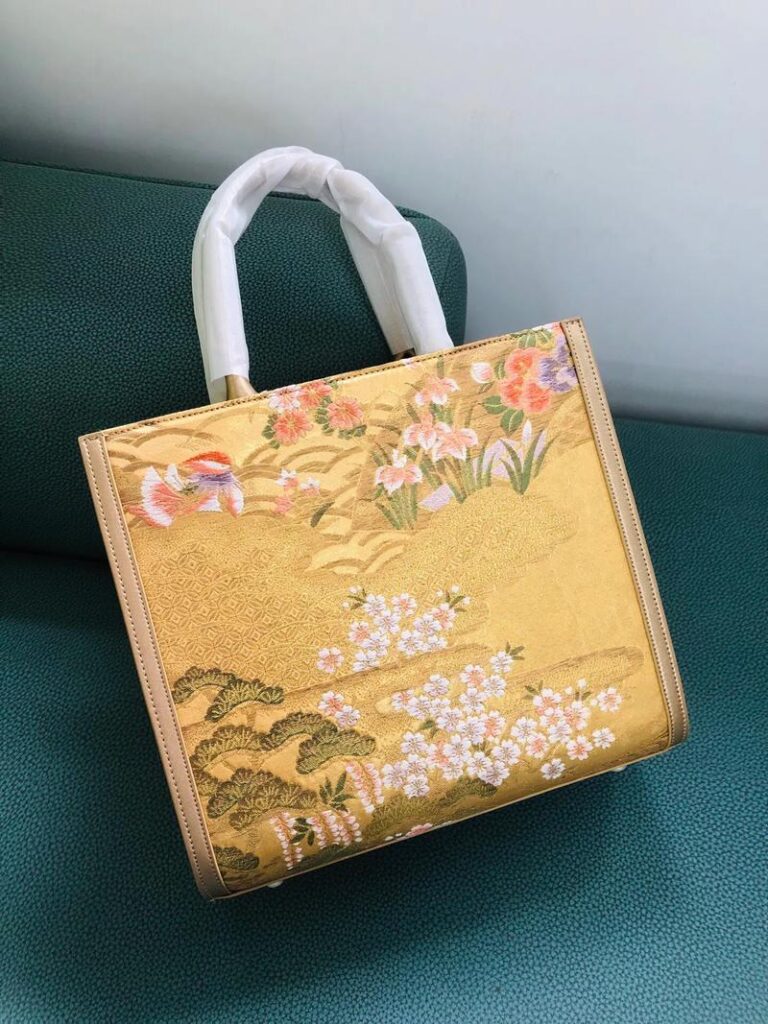Handbags, as one of the essential fashion accessories, have long transcended mere functionality. They are not only everyday necessities but also carry rich cultural symbolism and historical significance. Asia, with its incredibly diverse cultures, has greatly influenced the design of handbags, integrating unique traditions, craftsmanship, and social contexts into each piece. From Japan’s delicate embroidery to China’s traditional patterns, and Korea’s minimalist modern style, handbags from Asia showcase a unique blend of tradition and contemporary flair.
In this article, we will delve into the cultural significance of handbags in Asia, exploring how different countries and regions convey their cultural essence through handbags. We will also analyze how to optimize your independent website with SEO strategies to increase traffic and help more people discover these fascinating cultural stories.
1. Japanese Handbags: A Fusion of Traditional Craftsmanship and Modern Design
Japanese handbag design is deeply influenced by traditional craftsmanship, particularly the use of silk, embroidery, and lacquer techniques. Japanese handbags are known for their meticulous craftsmanship and refinement, with each piece embodying Japan’s pursuit of beauty. For example, kimono bags (Kimono Bag) are often made from traditional kimono fabric and feature exquisite embroidery, reflecting a rich cultural atmosphere. Additionally, the furoshiki bag, made by folding traditional wrapping cloth, is both practical and symbolic.
In modern times, Japanese designers have increasingly combined traditional elements with minimalist styles. Brands like Issey Miyake and Comme des Garçons incorporate innovative materials and clean lines into their handbag designs, showcasing Japan’s aesthetic for simplicity, elegance, and functionality.

2. Chinese Handbags: Traditional Patterns with Symbolic Meaning
Chinese handbag designs often merge rich national culture and symbolic significance. Traditional Chinese patterns and symbols such as dragons, phoenixes, peonies, and lotuses frequently appear in embroidery, prints, and decorations. Especially during major events like weddings, handbags are often used as cultural symbols representing good fortune, prosperity, and auspiciousness.
For example, the phoenix crown handbag is one of China’s iconic handicrafts. It is typically made from fine silk and features intricate embroidery and rich colors. In recent years, many young designers have combined these traditional elements with modern design concepts, creating handbags that reflect both traditional culture and contemporary aesthetics. Guo Pei, a renowned Chinese haute couture designer, is famous for merging traditional Chinese elements with Western fashion, creating unique handbag designs.
Additionally, the Suzhou embroidery handbag is another example, showcasing fine Suzhou embroidery with nature-themed designs such as flowers and birds, displaying the charm of traditional Chinese art.
3. Korean Handbags: The Perfect Blend of Simplicity and Innovation
Korean handbag design is celebrated for its minimalist yet stylish approach, and Korean designers are skilled at combining traditional craftsmanship with modern fashion trends. Brands like WOOYOUNGMI and MCM have gained international recognition for their clean lines, simple designs, and high-quality materials, which make Korean handbags both functional and trendy.
Korean handbag design emphasizes “practical aesthetics.” Many handbags are designed for multi-functional use while maintaining a modern, minimalist appearance. Popular elements include symmetrical designs, sleek contours, and bold color pairings, making Korean handbags perfect for young, fashion-conscious consumers who seek both style and practicality.
4. Indian Handbags: A Brilliant Mix of Colors and Craftsmanship
Indian handbag designs are vibrant and deeply reflective of the country’s rich artistic traditions. These handbags are often characterized by bright colors, intricate embroidery, beads, and textiles. Especially during festivals and weddings, Indian handbags are made using tie-dye fabrics, gold and silver thread embroidery, and gemstone embellishments, giving each handbag a unique appeal.
For instance, Indian embroidered handbags are renowned for their delicate hand-stitched patterns and gold thread, often incorporating traditional religious motifs and symbols. As modern fashion influences India’s design scene, Indian designers have started to create more innovative handbags, blending contemporary design ideas with traditional craftsmanship, attracting global consumers.
5. Southeast Asian Handbags: A Fusion of Nature and Handmade Art
Handbag design in Southeast Asia is heavily influenced by the tropical climate, natural resources, and traditional handicrafts of the region. Materials like coconut shells, bamboo, and silk are commonly used in Southeast Asian handbags. These bags are typically handcrafted by local artisans, reflecting the region’s respect for nature and cultural heritage.
In Thailand and Vietnam, many handbags feature traditional woven crafts and natural fibers that combine aesthetic beauty with environmental sustainability. For example, Thai bamboo handbags are very popular, with woven patterns that often incorporate auspicious motifs symbolizing good luck, reflecting the locals’ respect for nature and culture.
Conclusion: The Cultural Value and Fashion Significance of Asian Handbags
Asian handbags represent a unique fusion of cultural heritage and modern fashion. From Japan’s intricate craftsmanship to India’s vibrant colors, from China’s traditional patterns to Korea’s minimalist style, each handbag design tells the story of its cultural origins. Whether used as everyday accessories or as cultural symbols, Asian handbags have made a significant impact on the global fashion scene.
For businesses running independent websites, understanding these cultural backgrounds can help you create products with cultural significance, attracting consumers interested in Asian culture. At the same time, with the right SEO strategies, you can increase your website’s ranking and traffic, bringing more attention to these cultural stories.

This article is truly fascinating! It delves deep into the unique cultural and design styles of handbags across Asia. From Japan’s exquisite craftsmanship to India’s vibrant colors and Korea’s minimalist fashion, each section gave me a greater understanding of Asian handbags. The article not only provides cultural context but also blends modern fashion trends, making the stories behind these designs even more captivating. It’s a must-read for anyone interested in the fusion of culture and fashion!